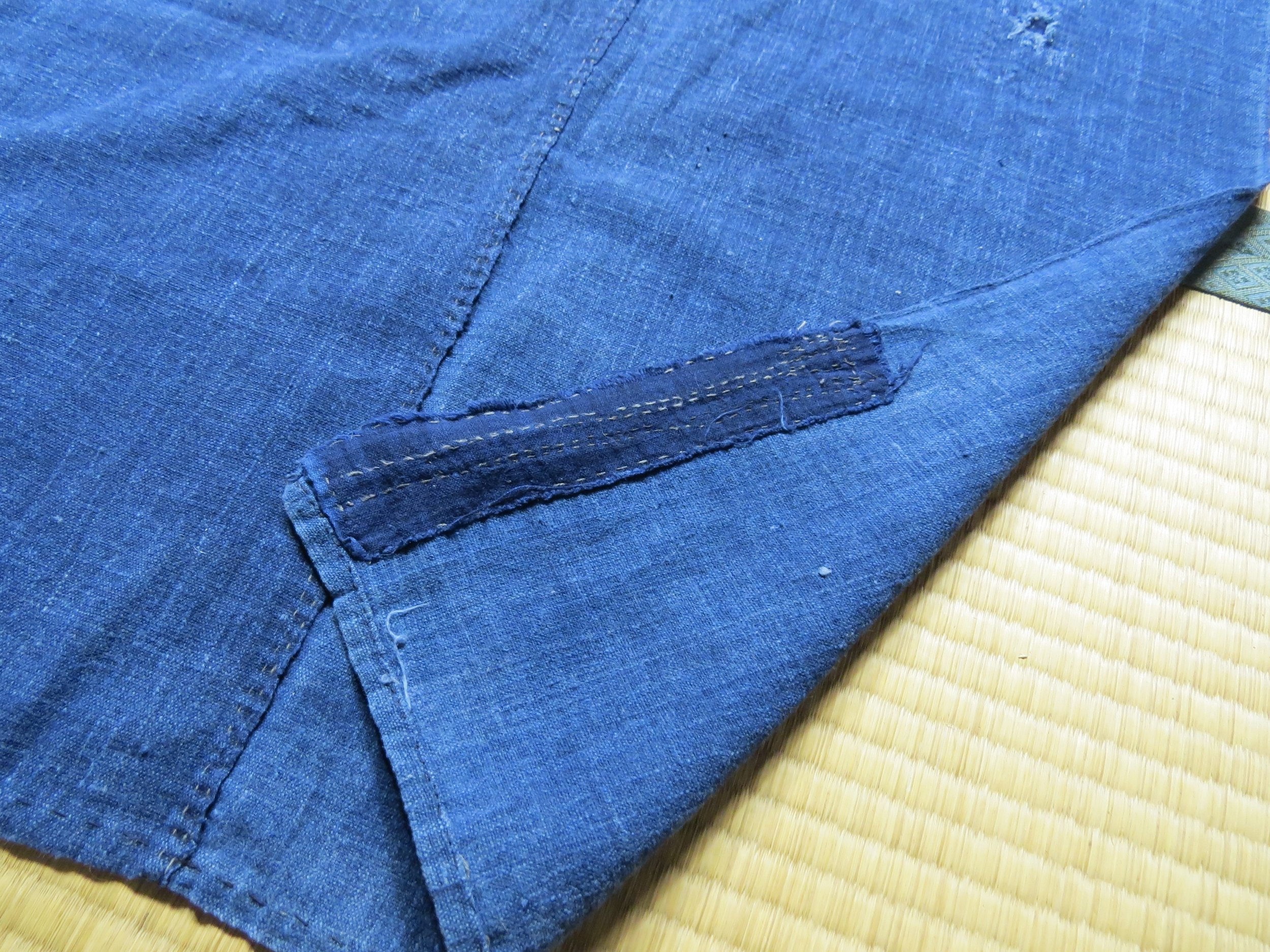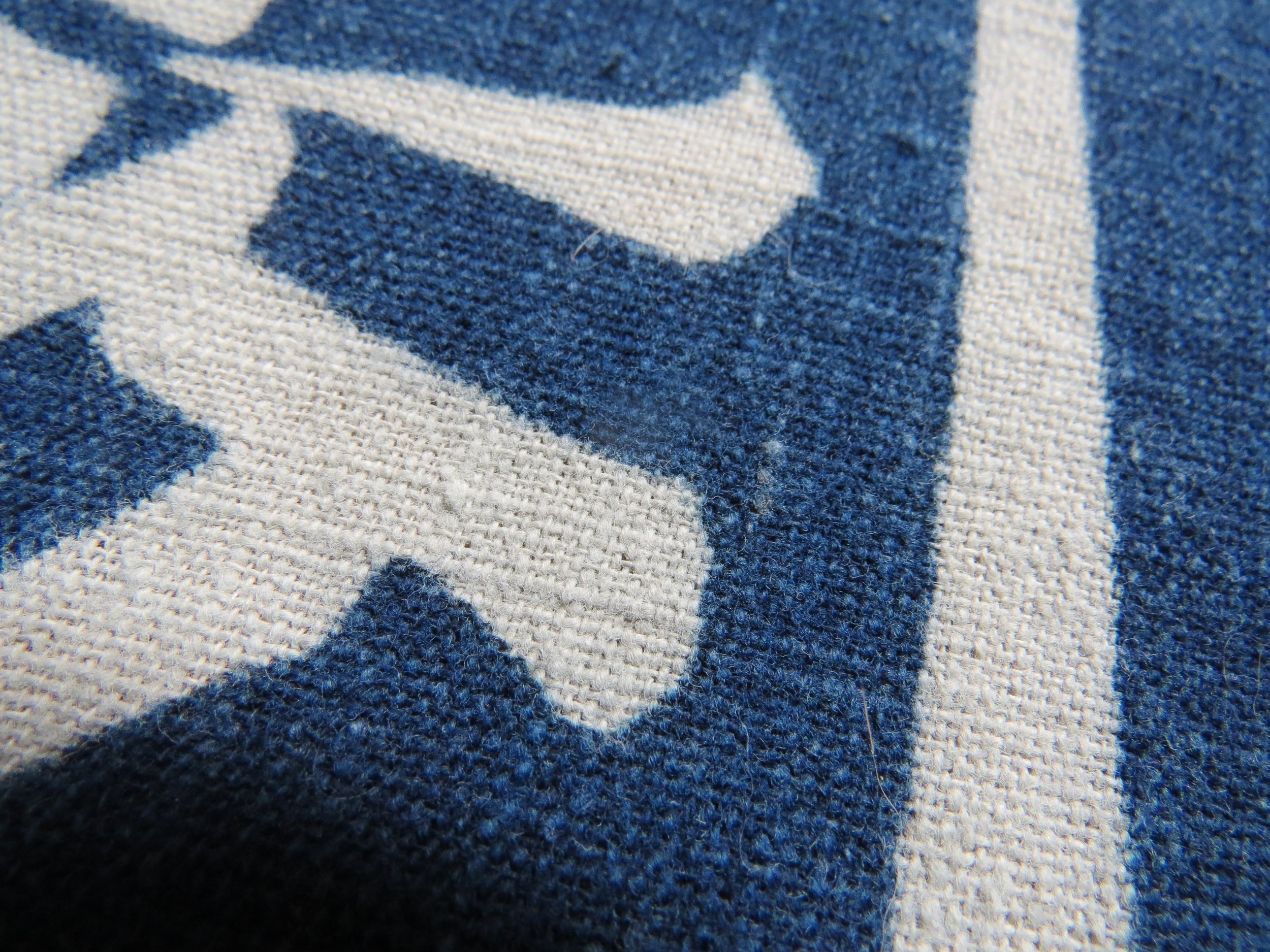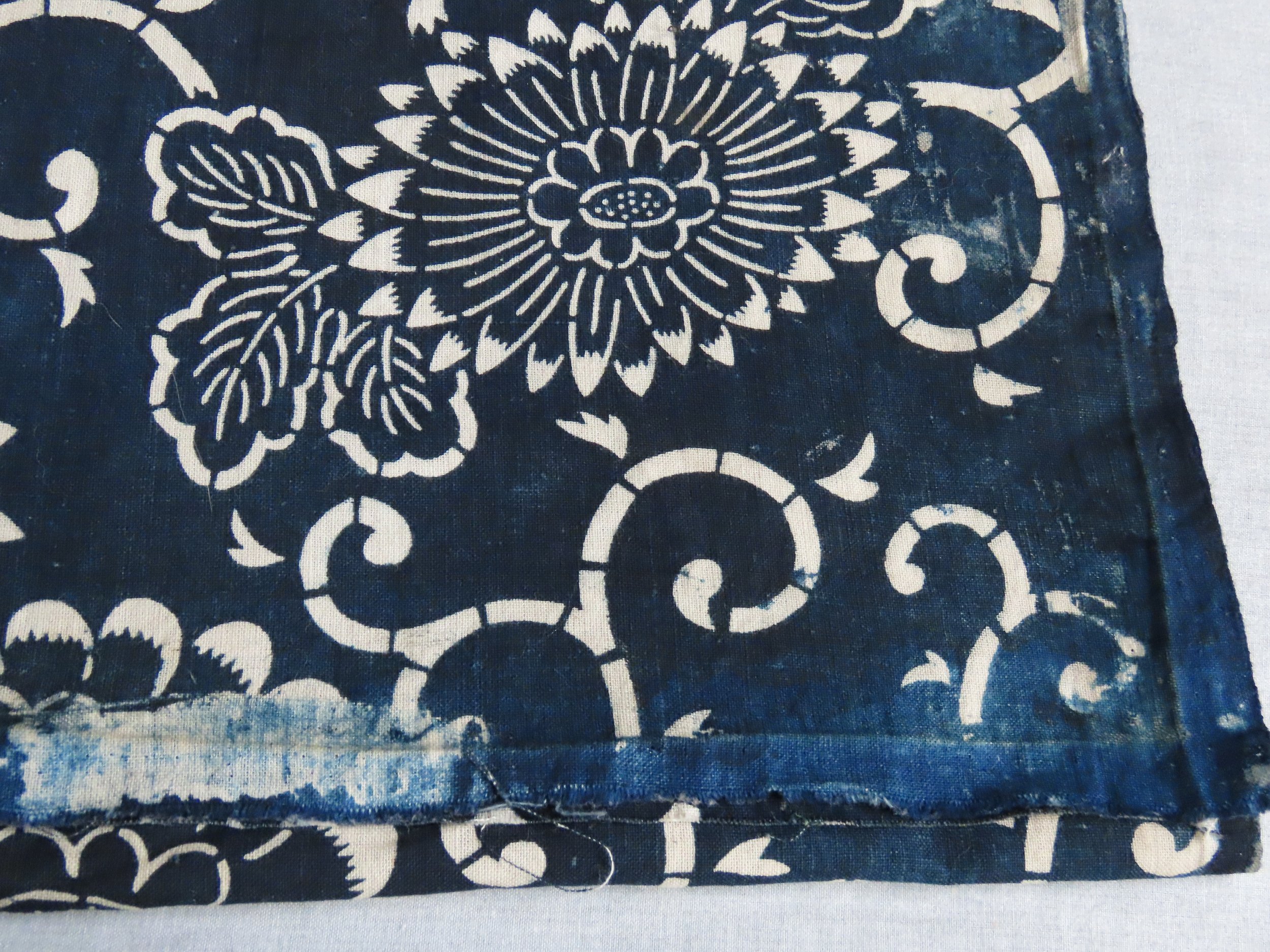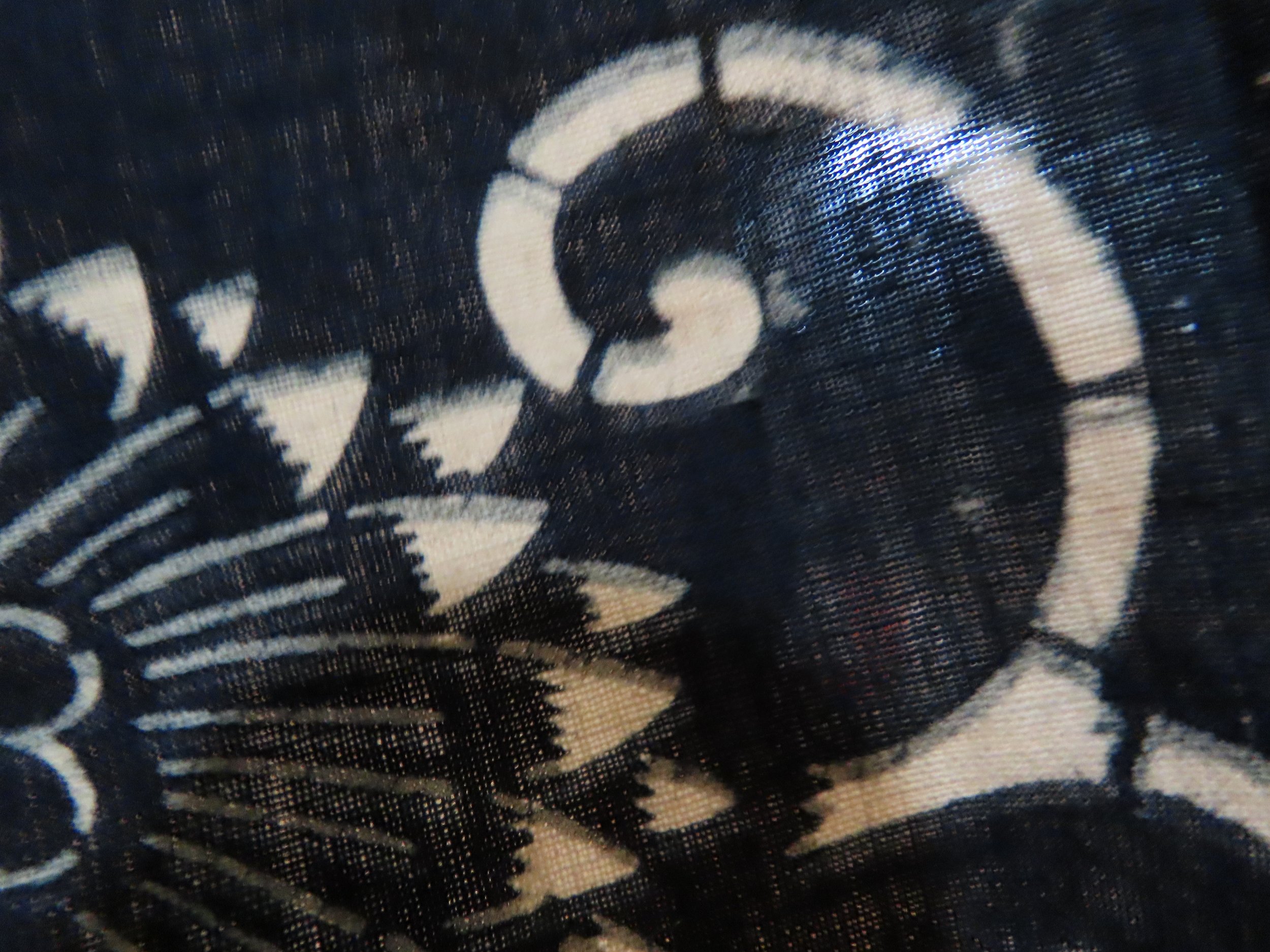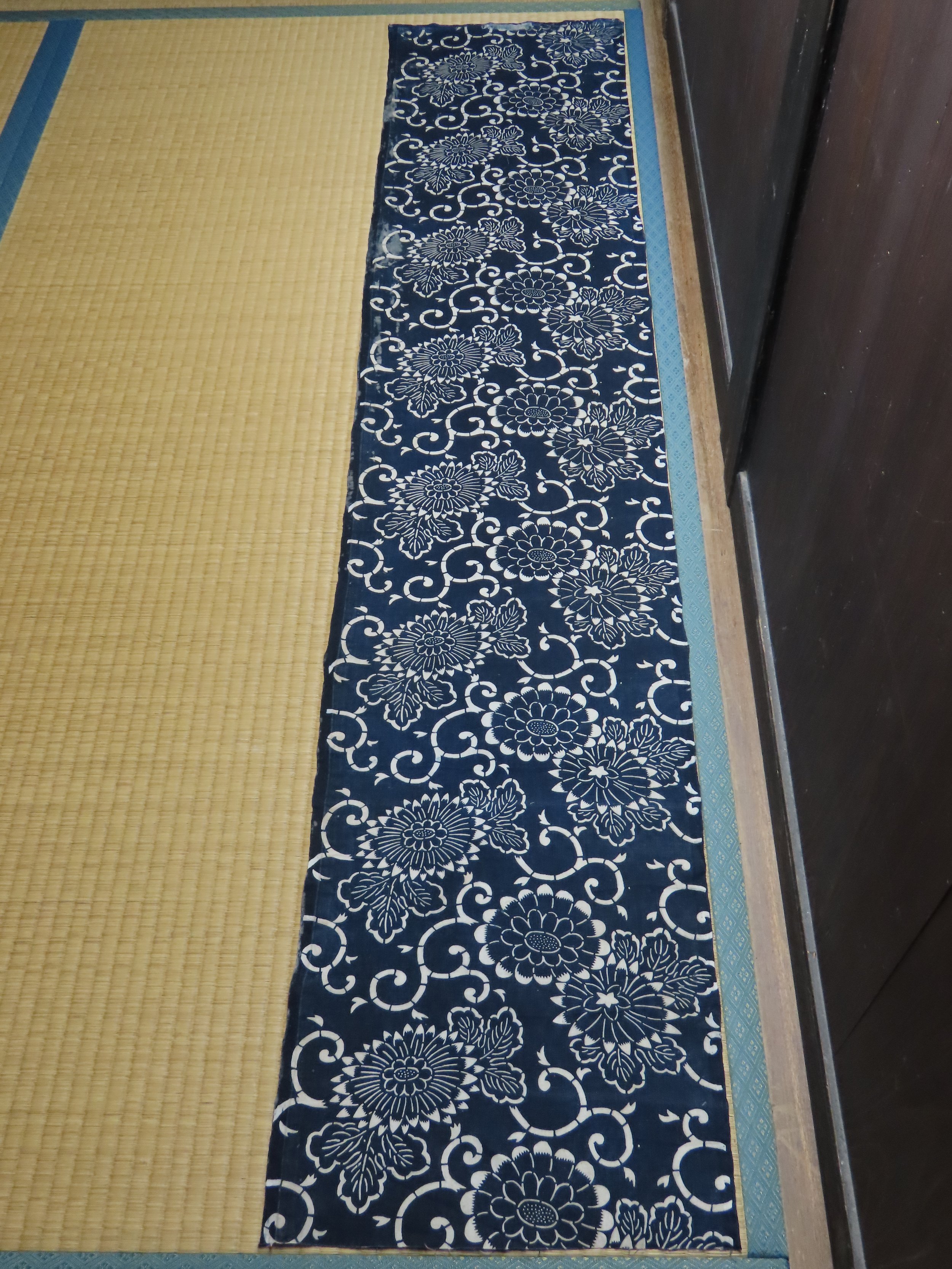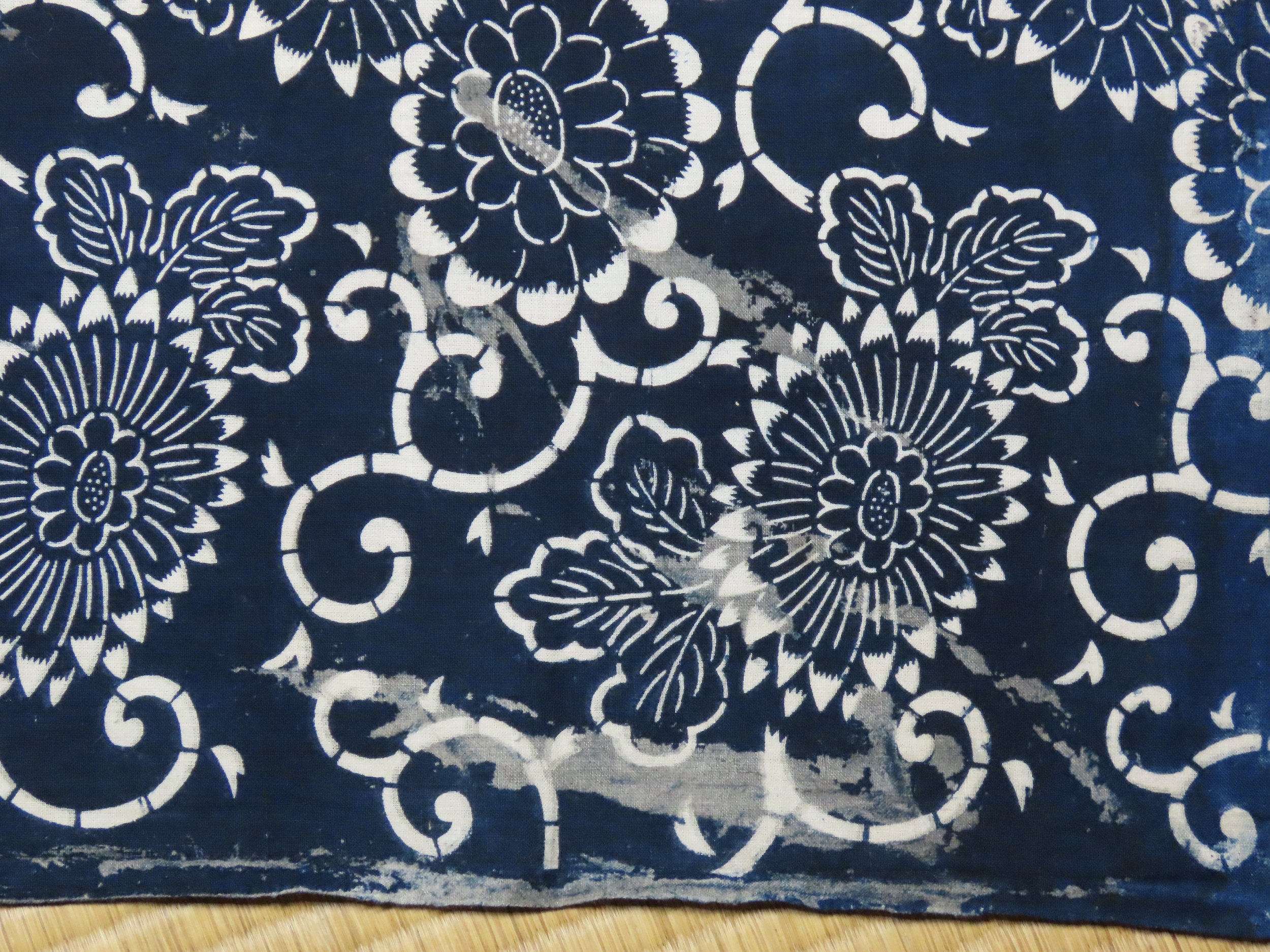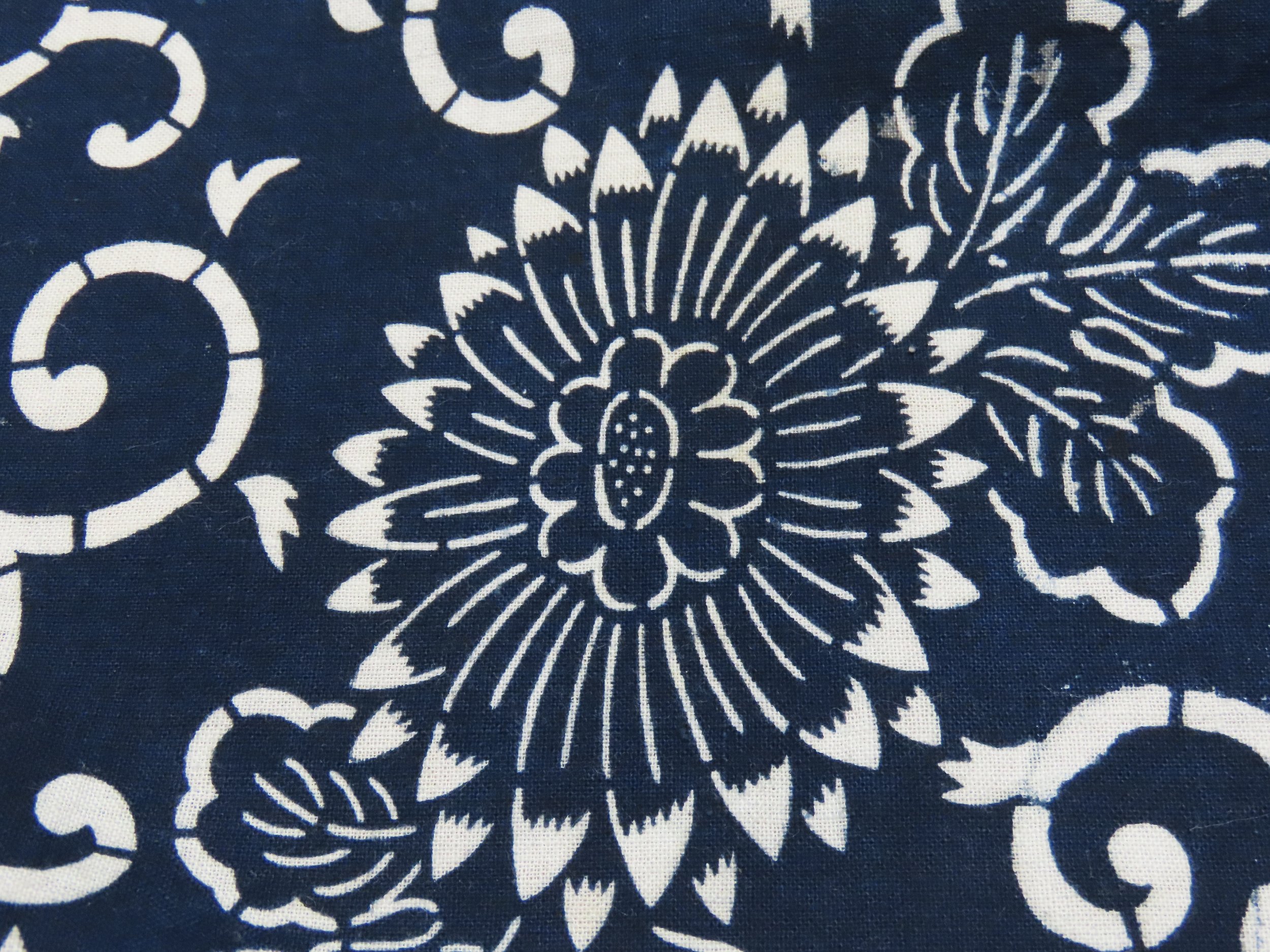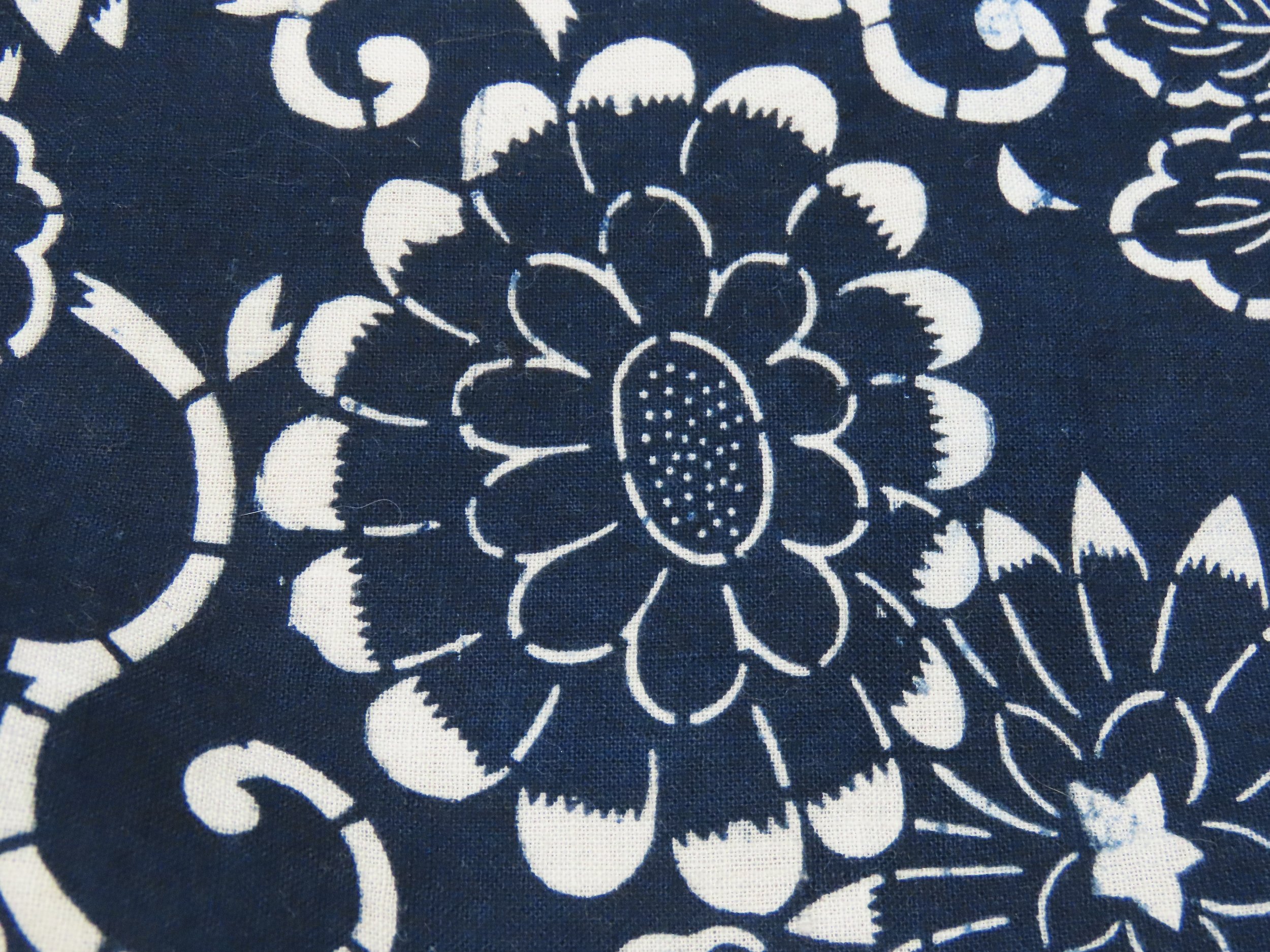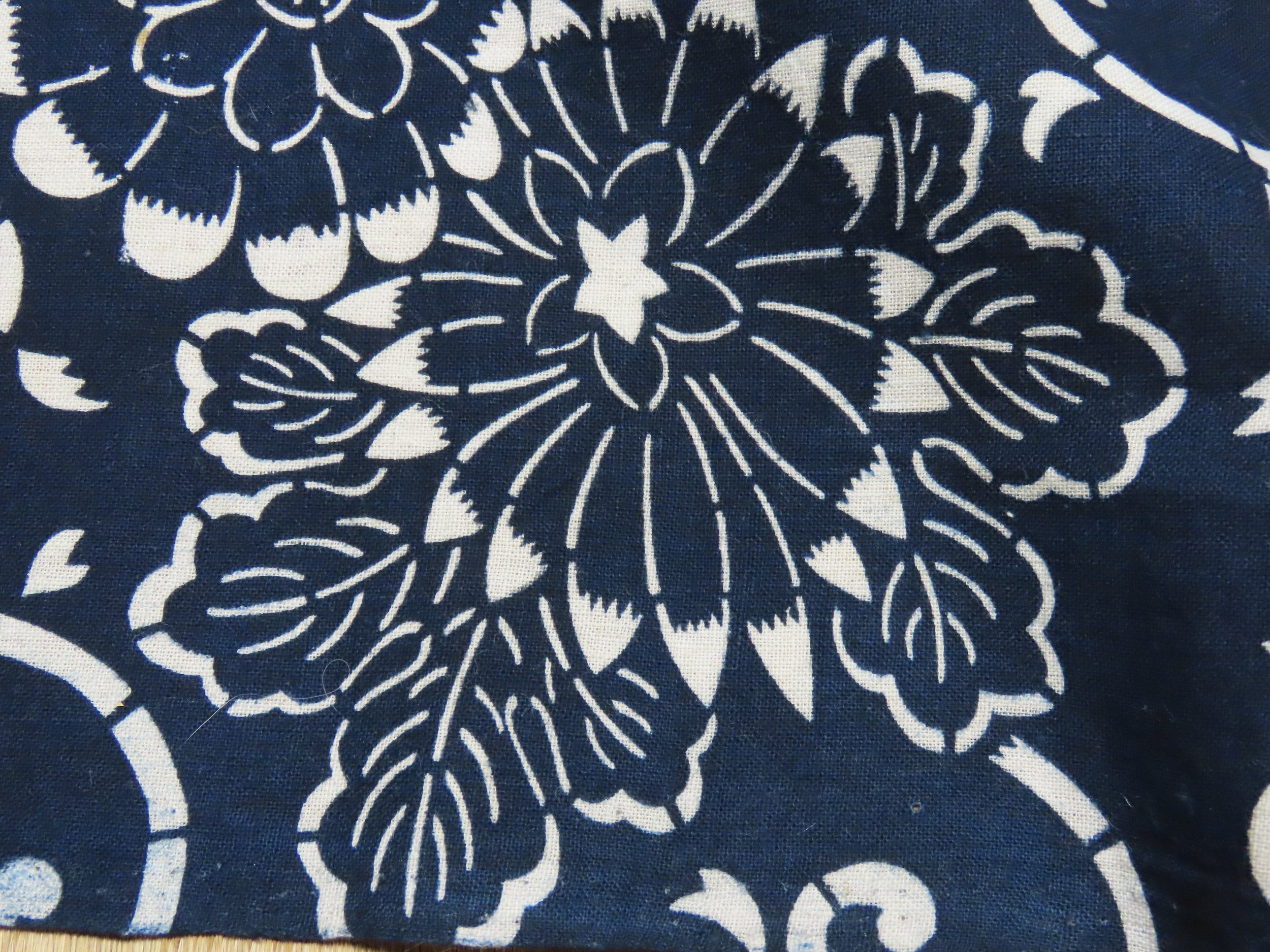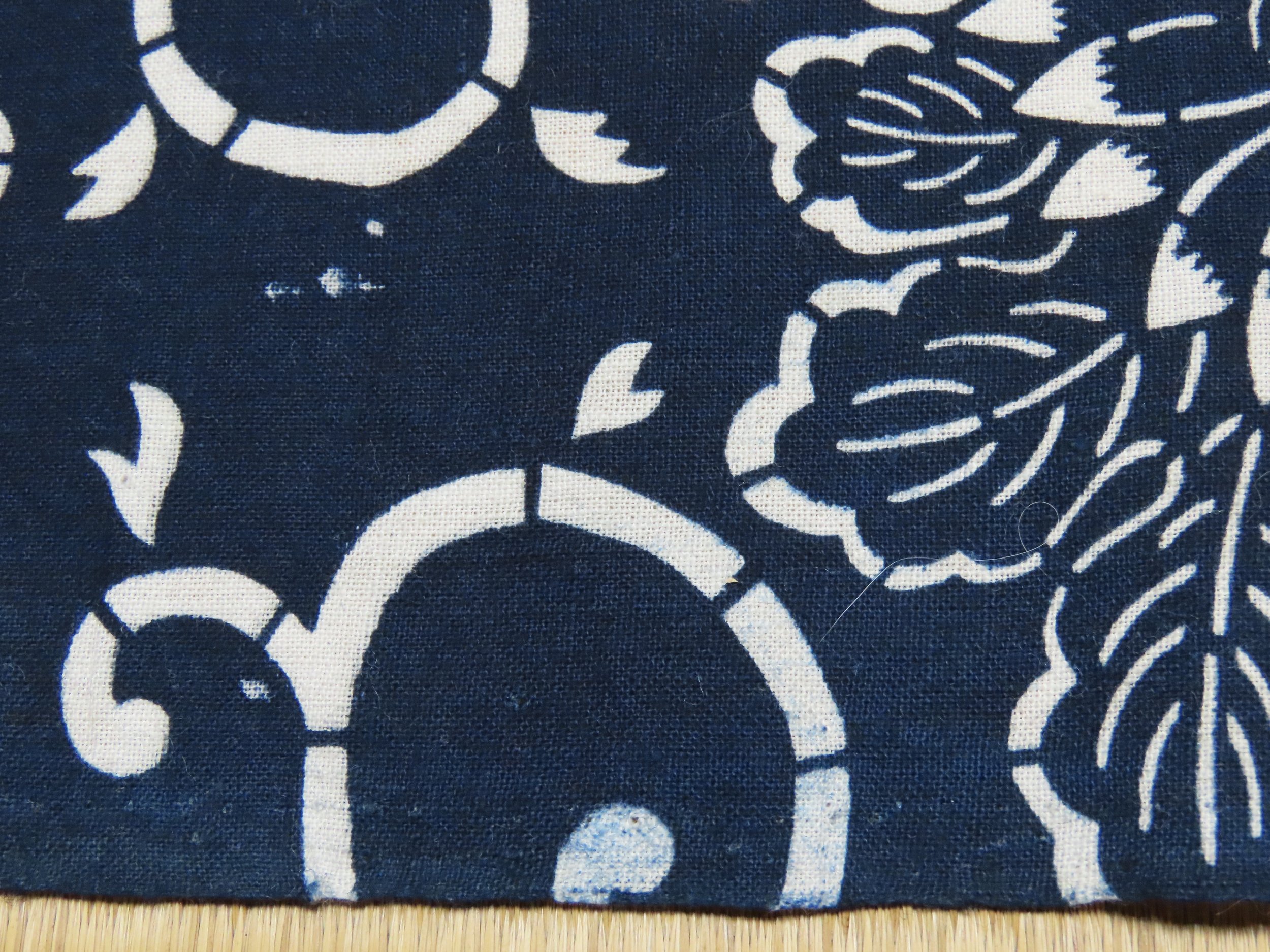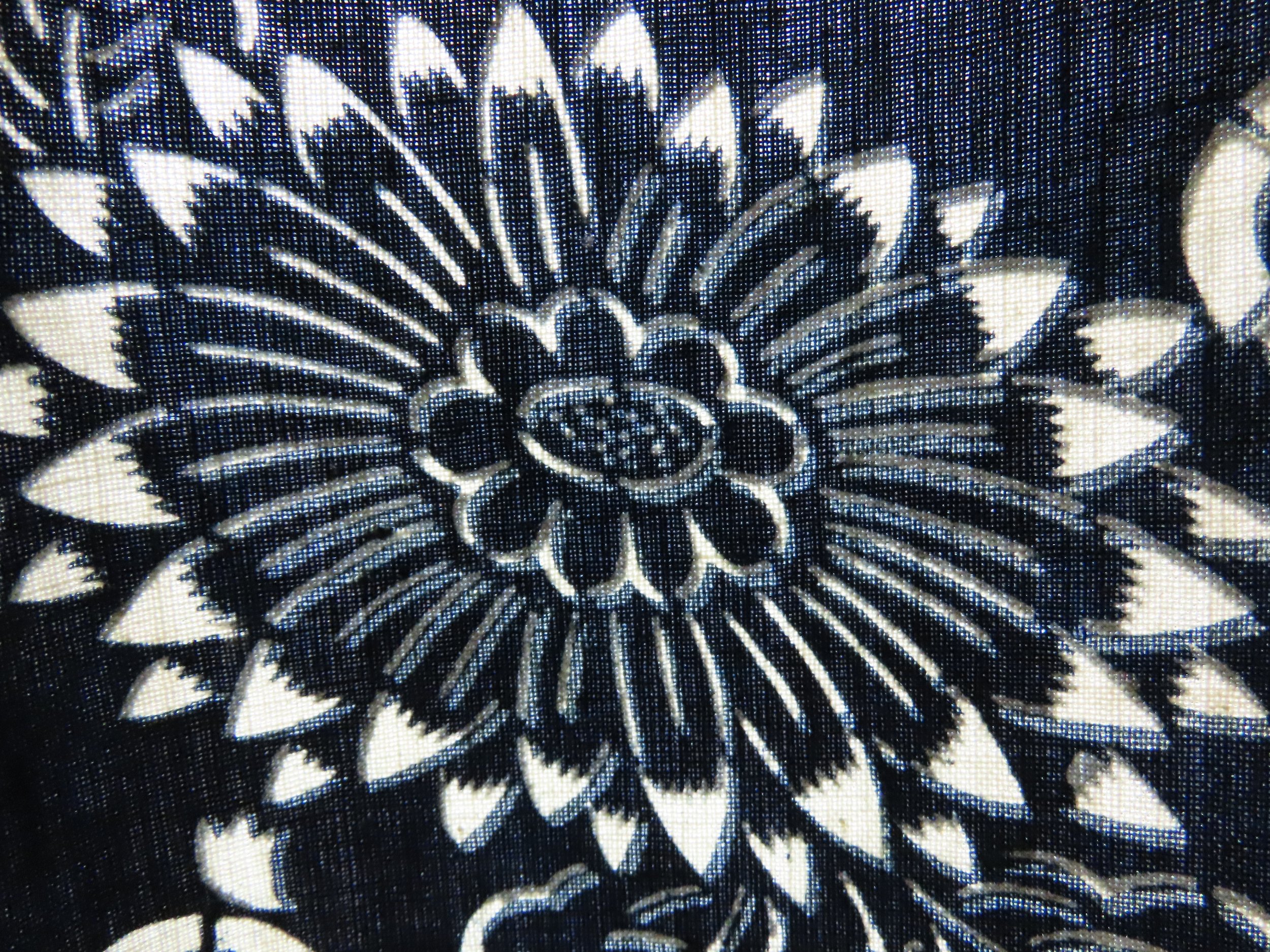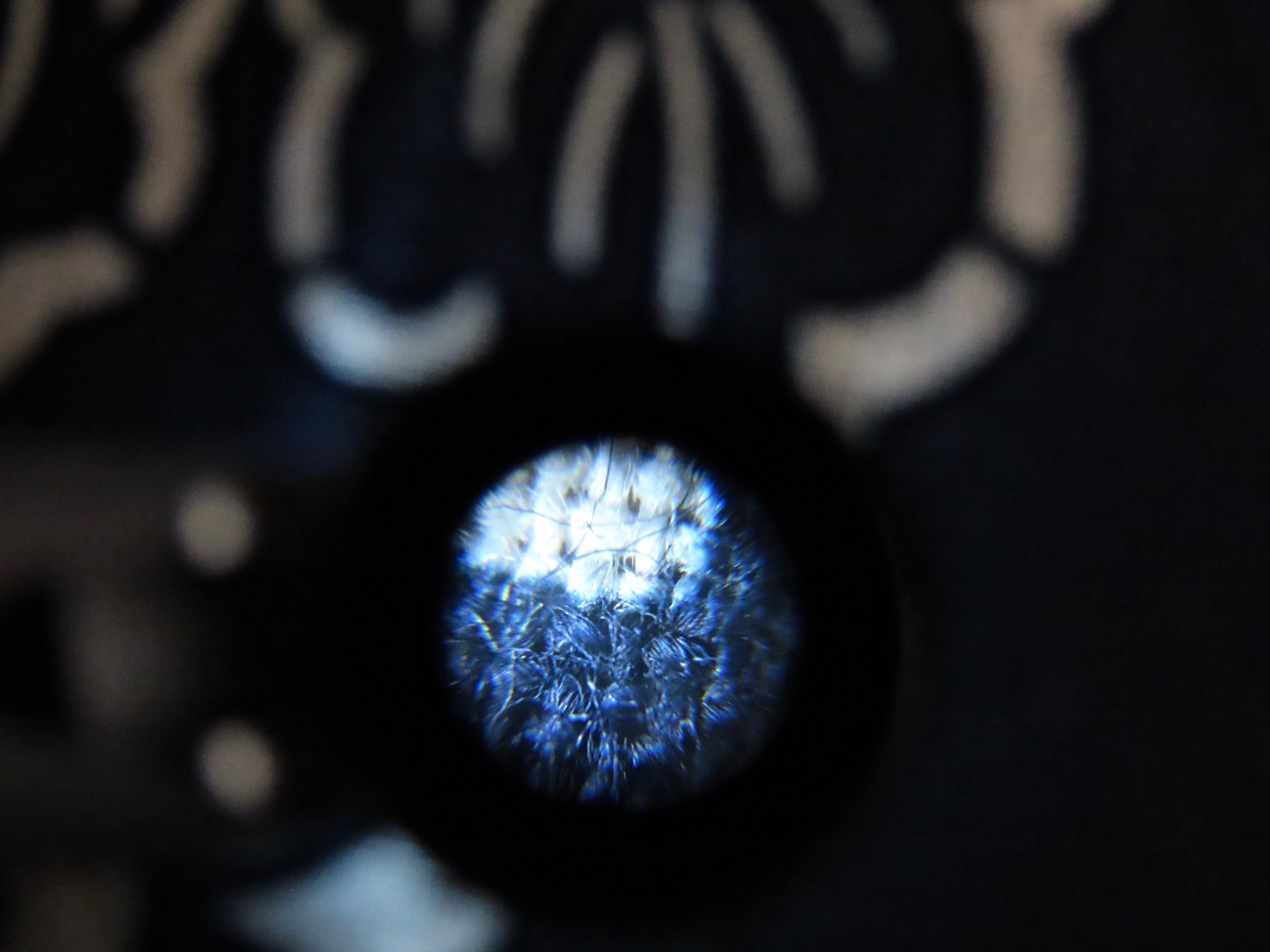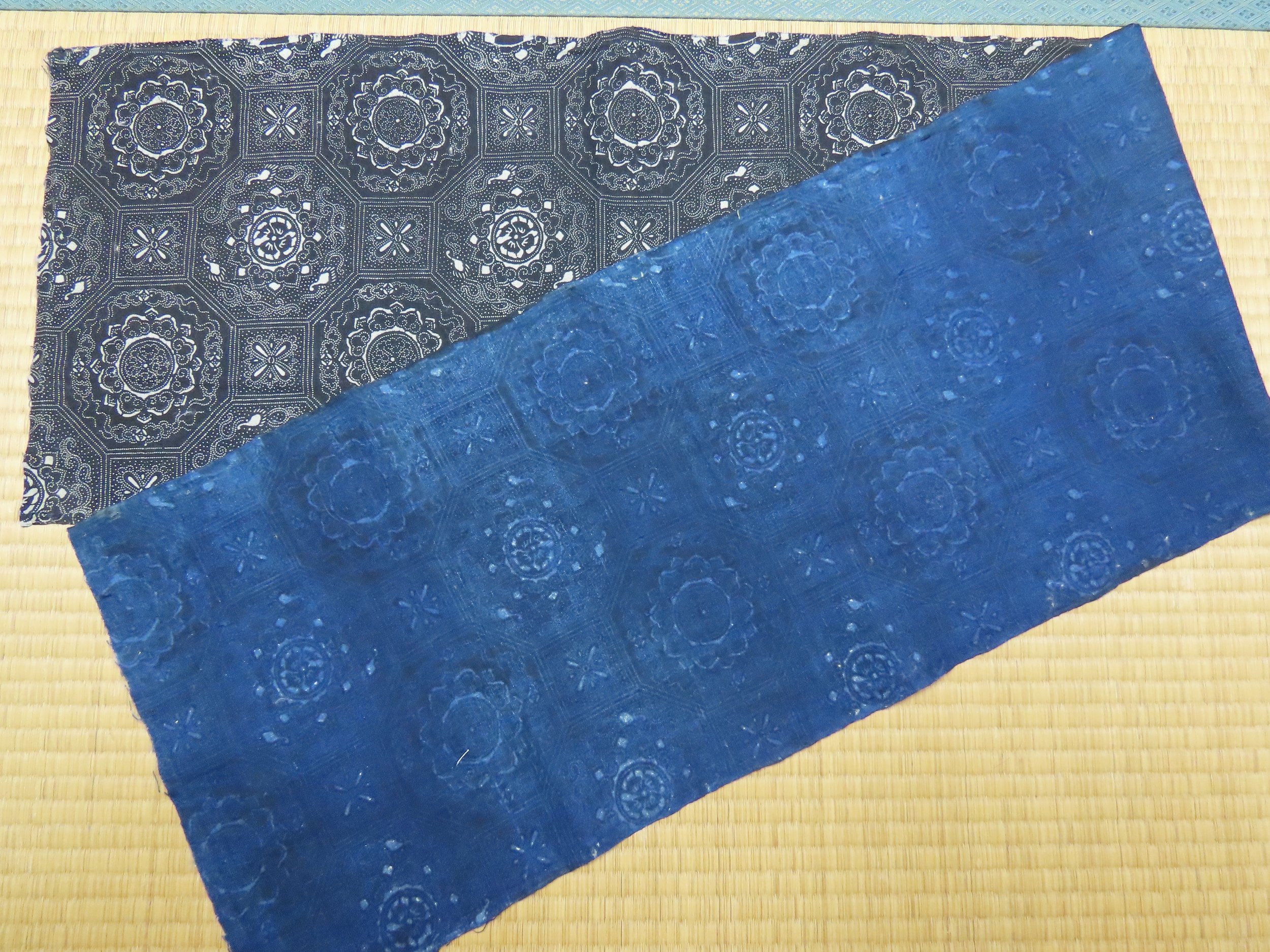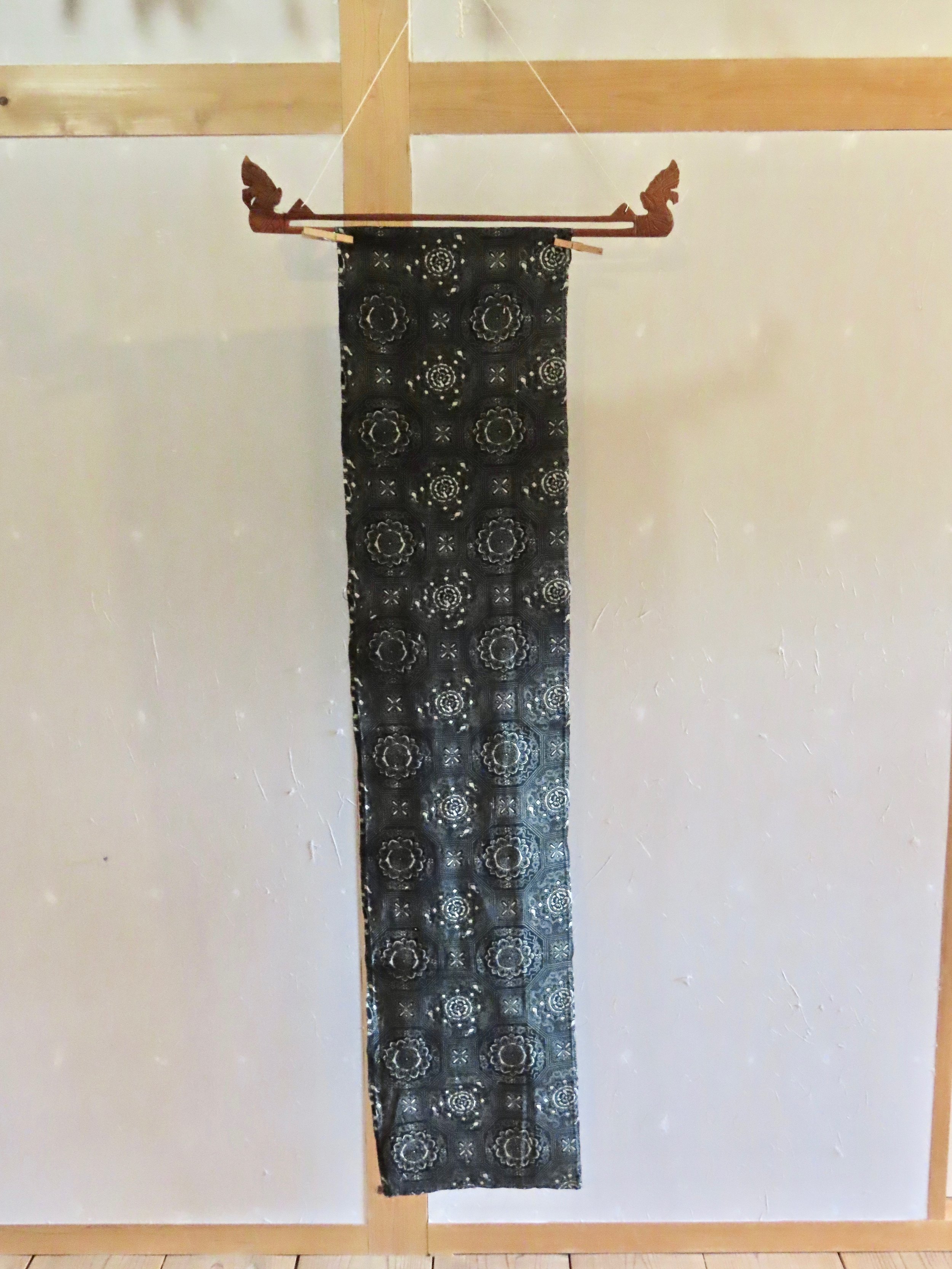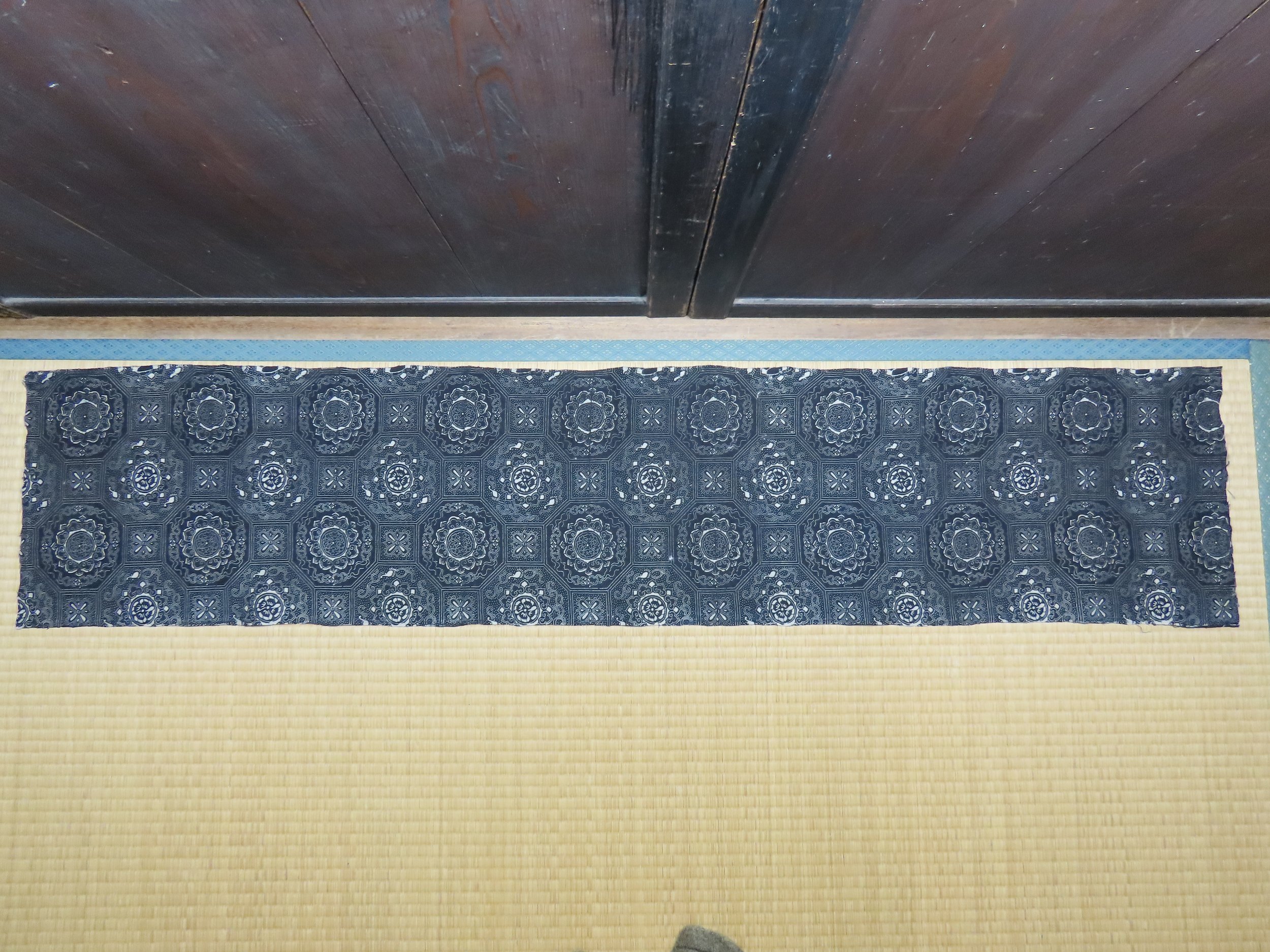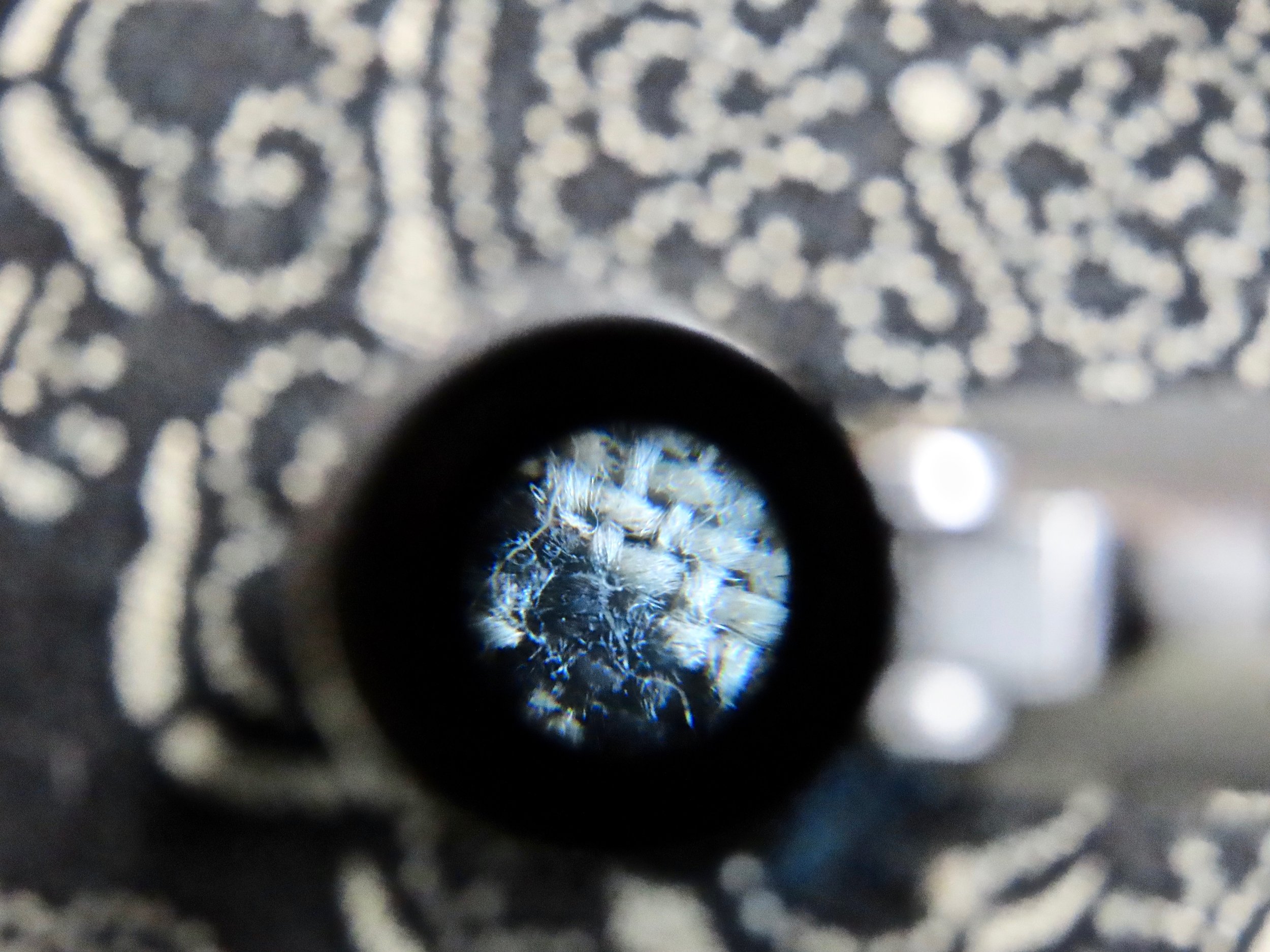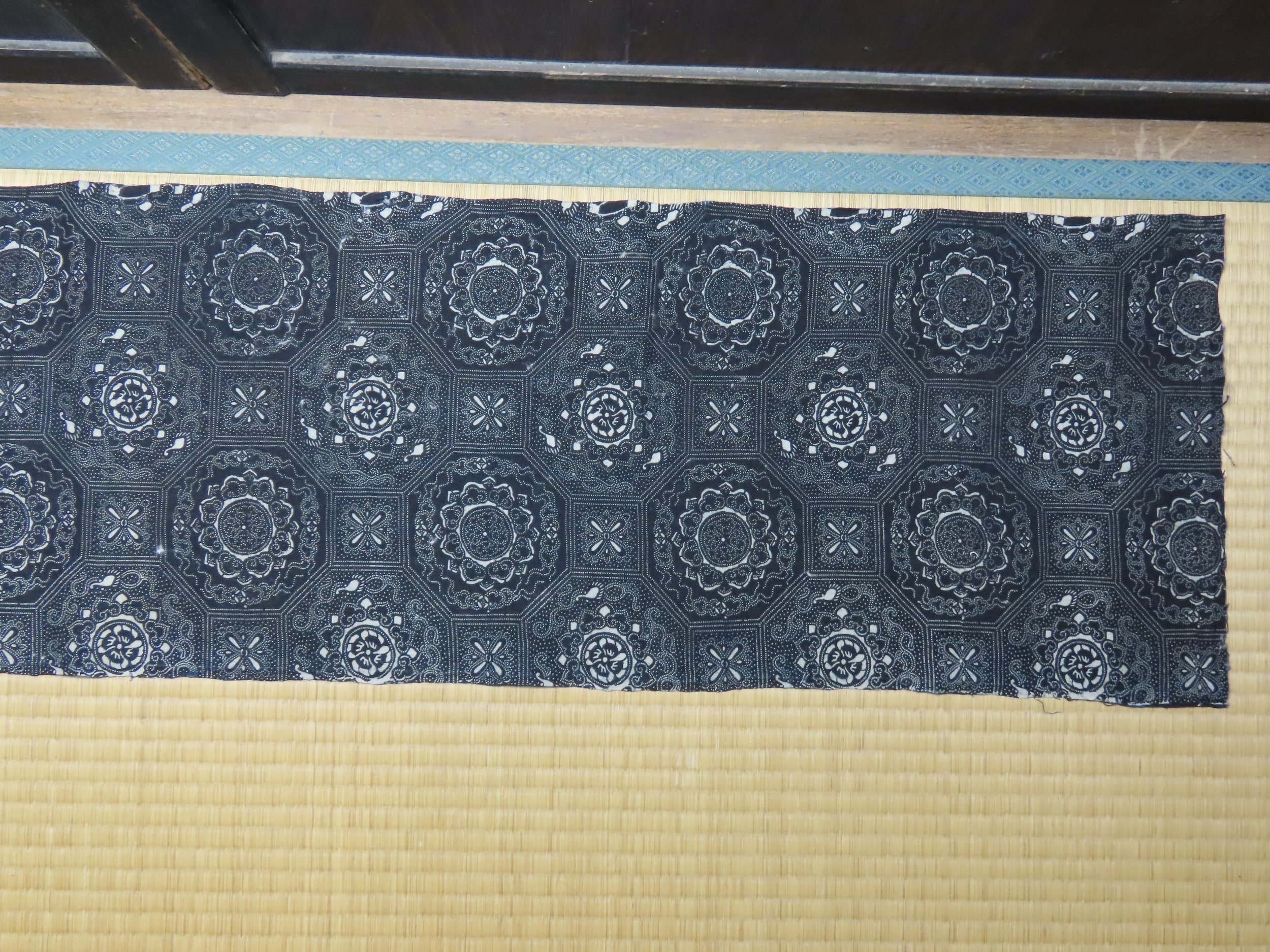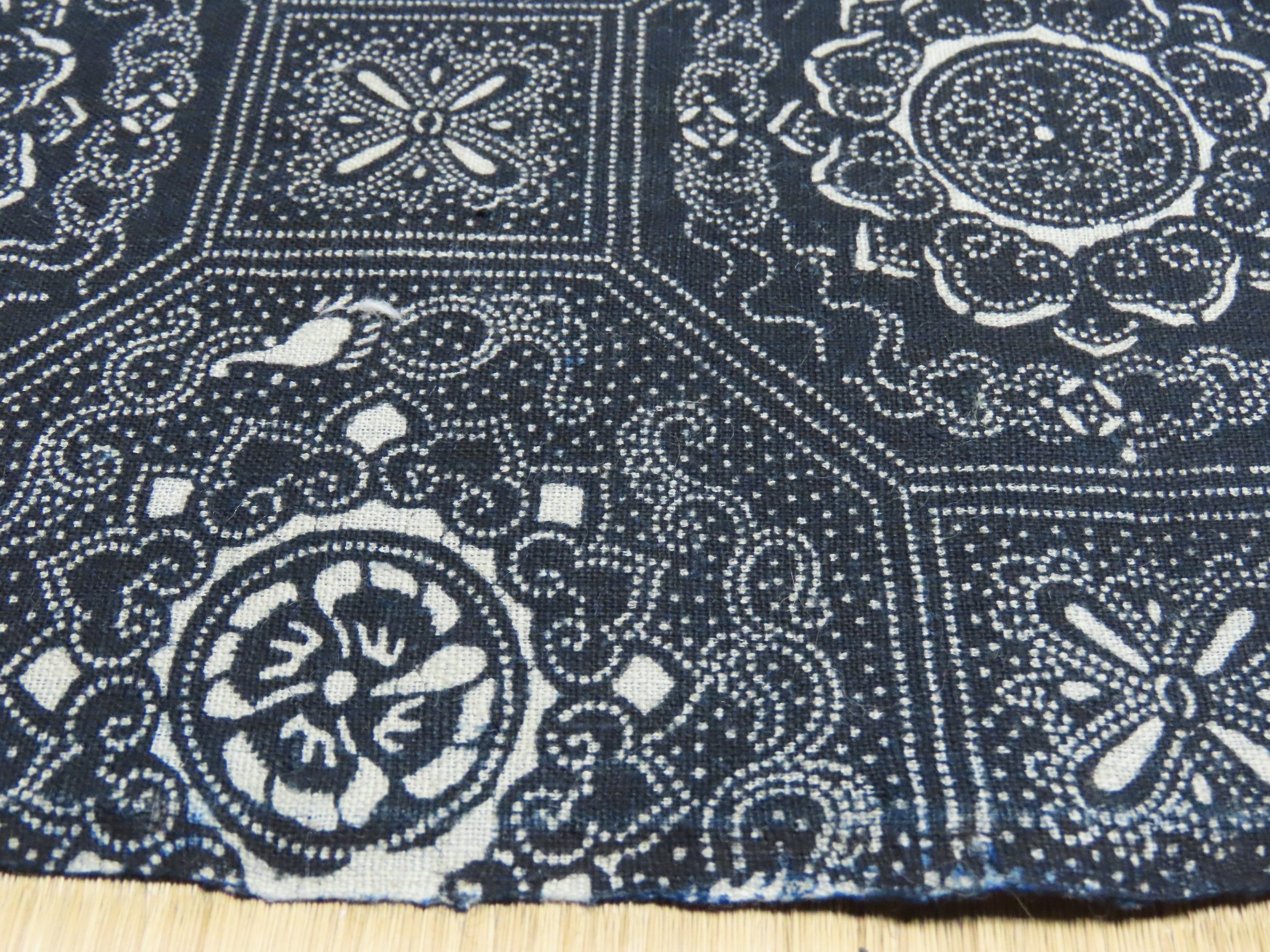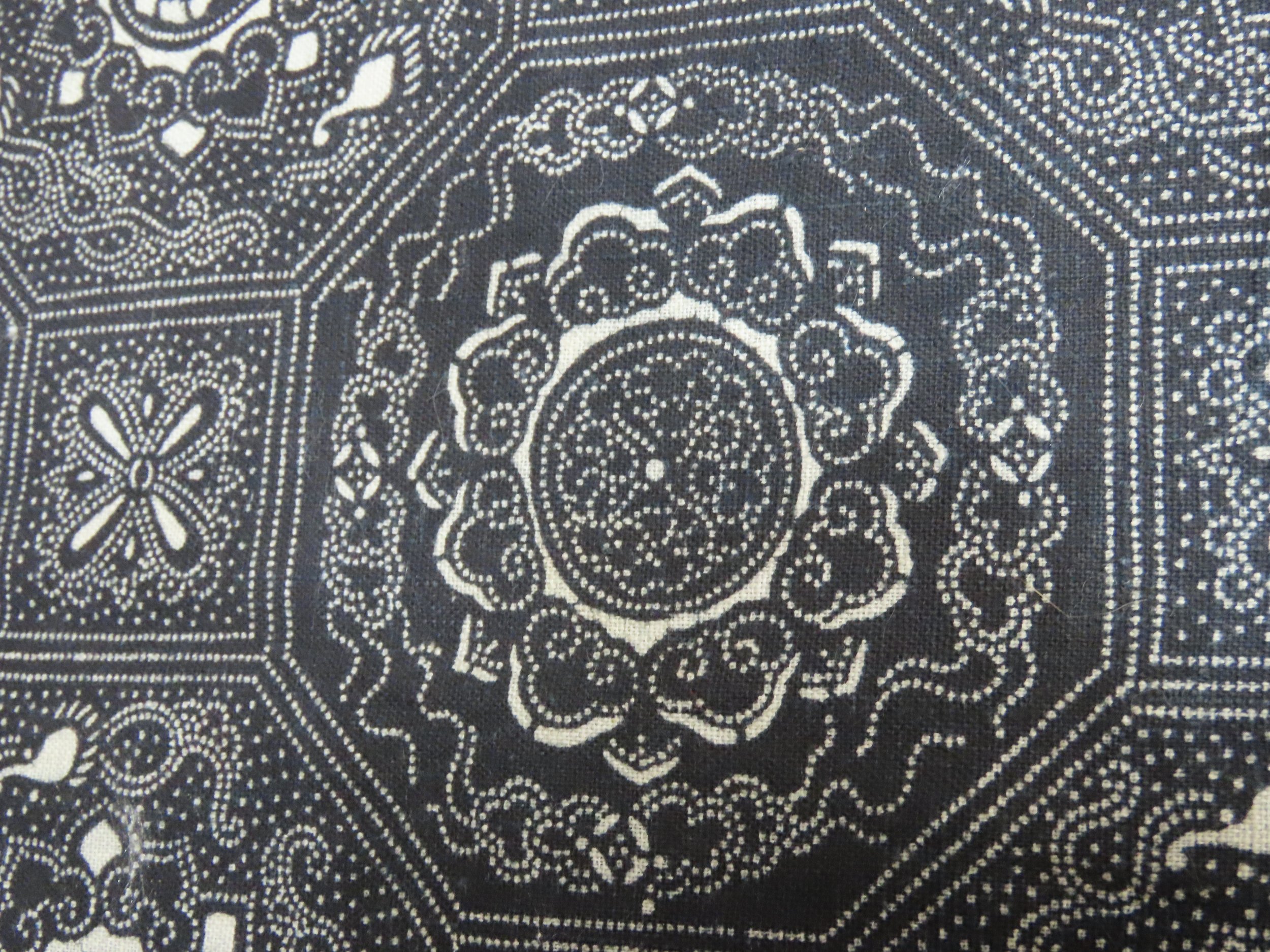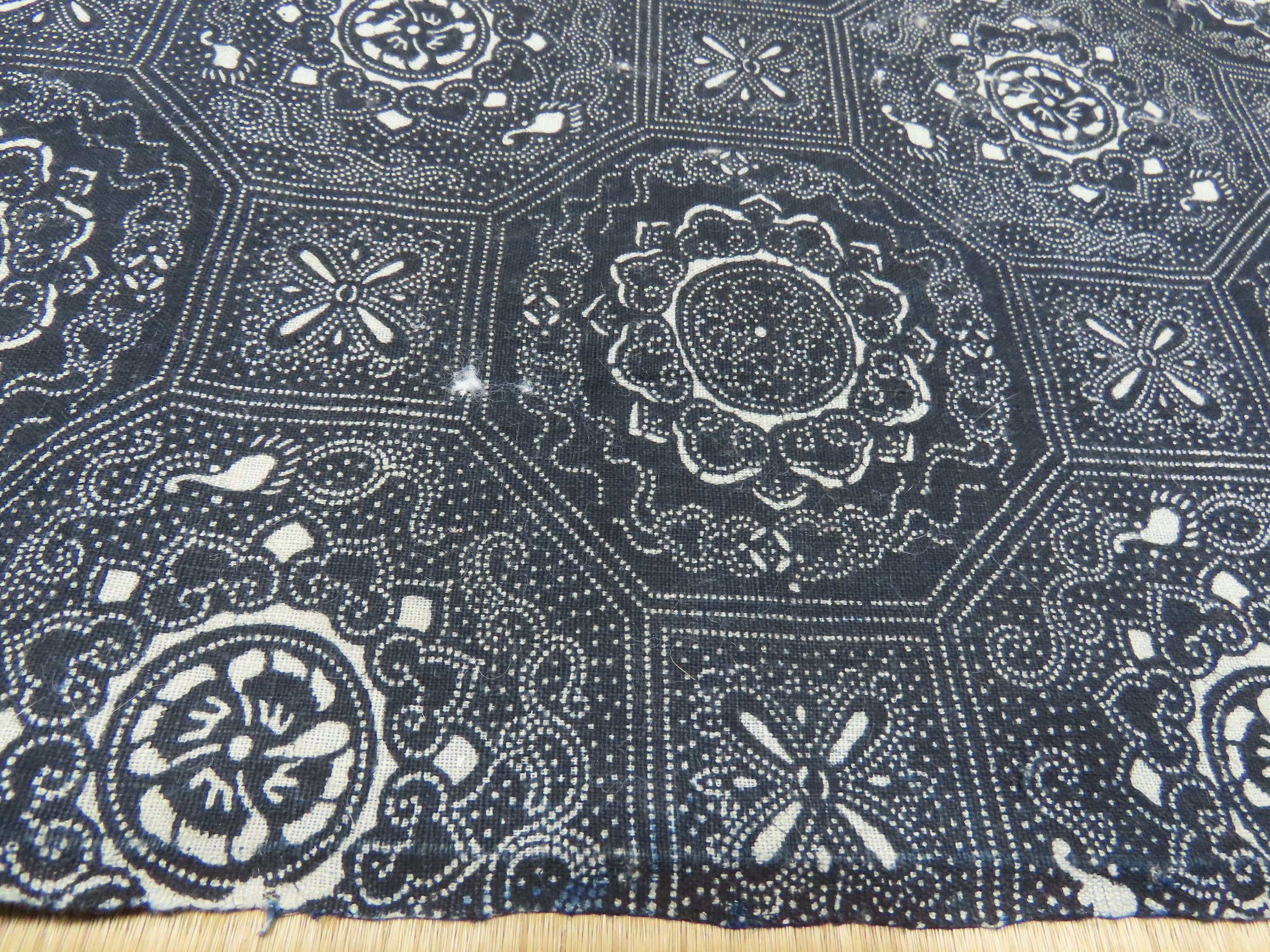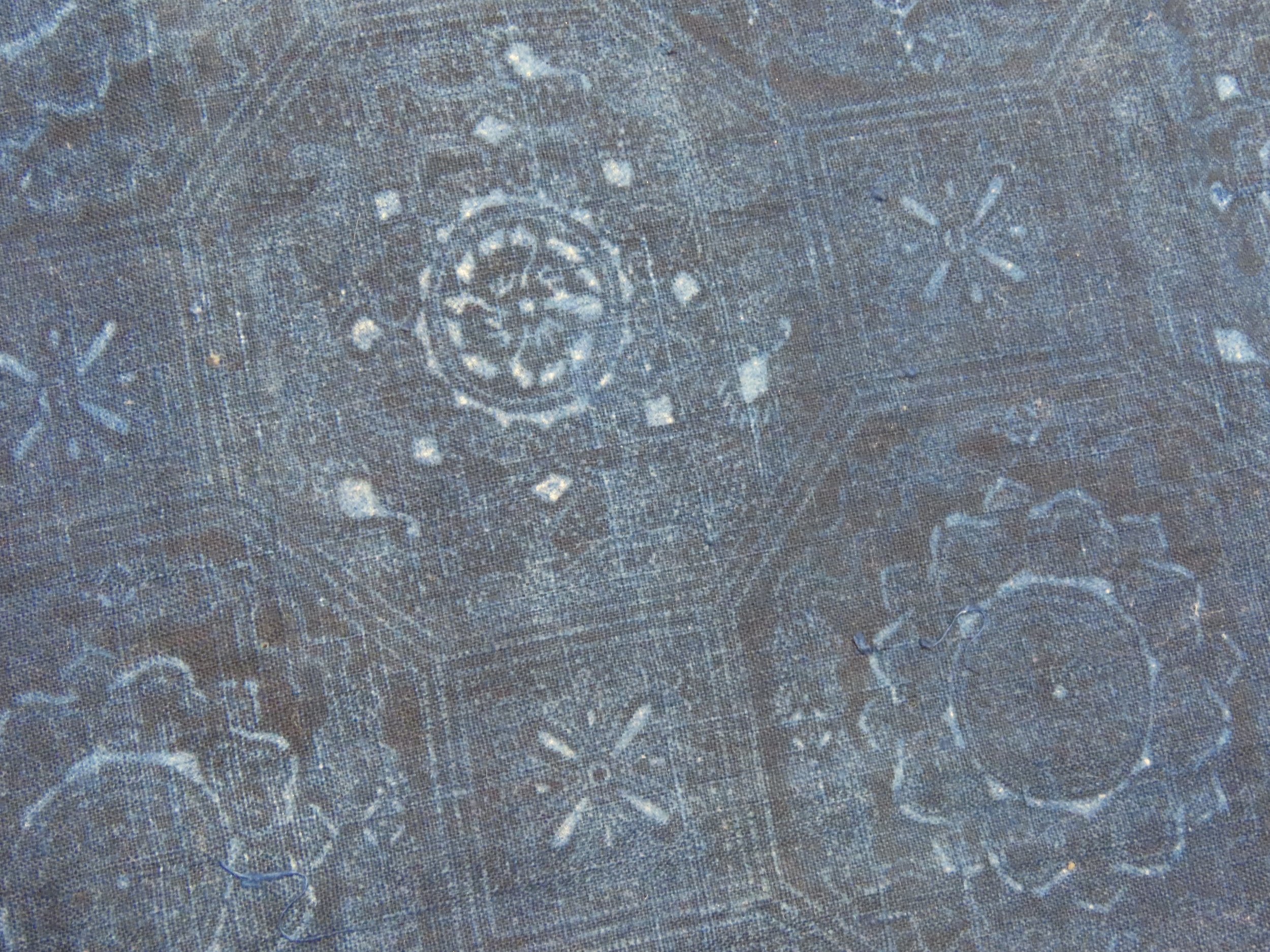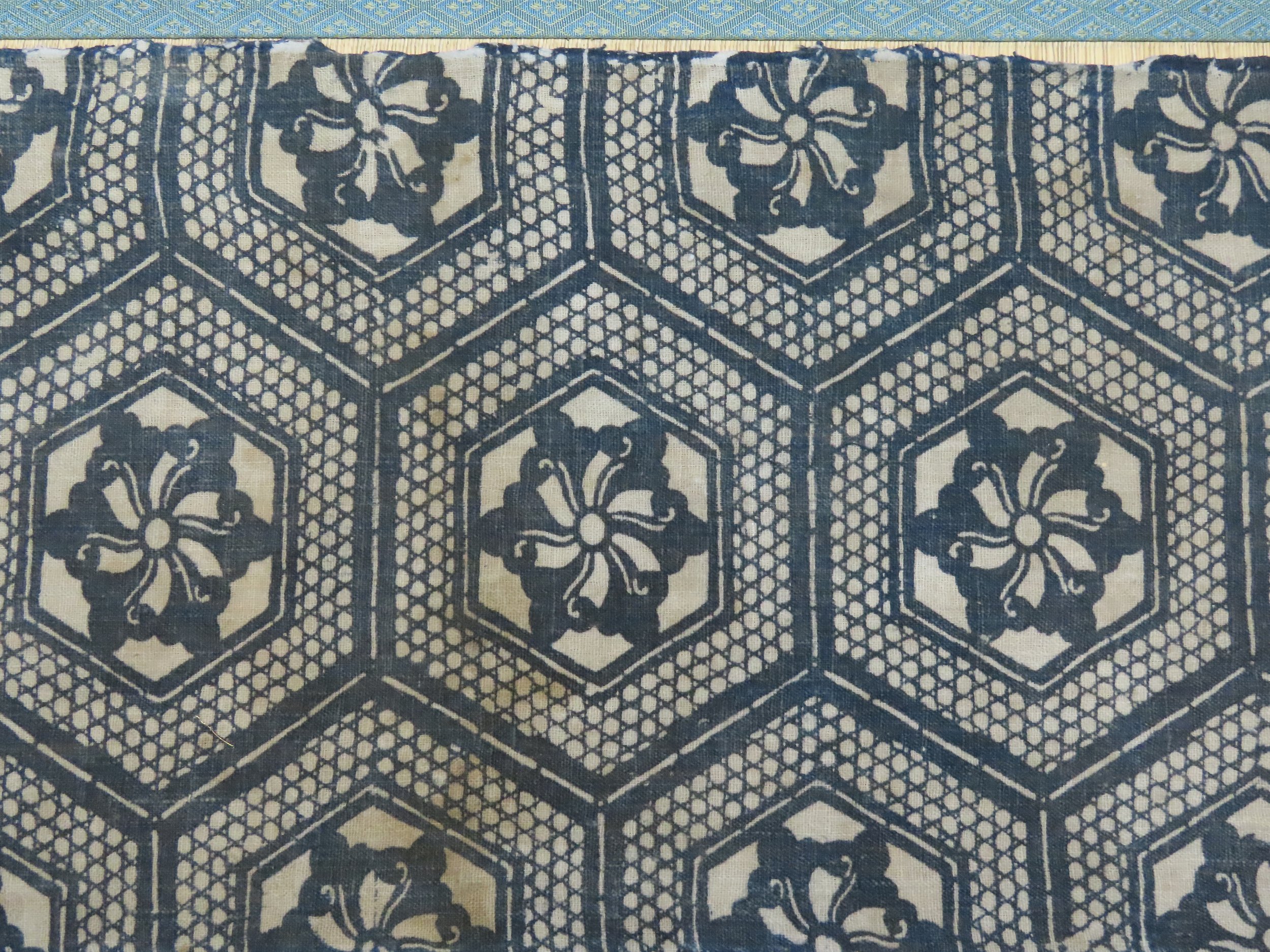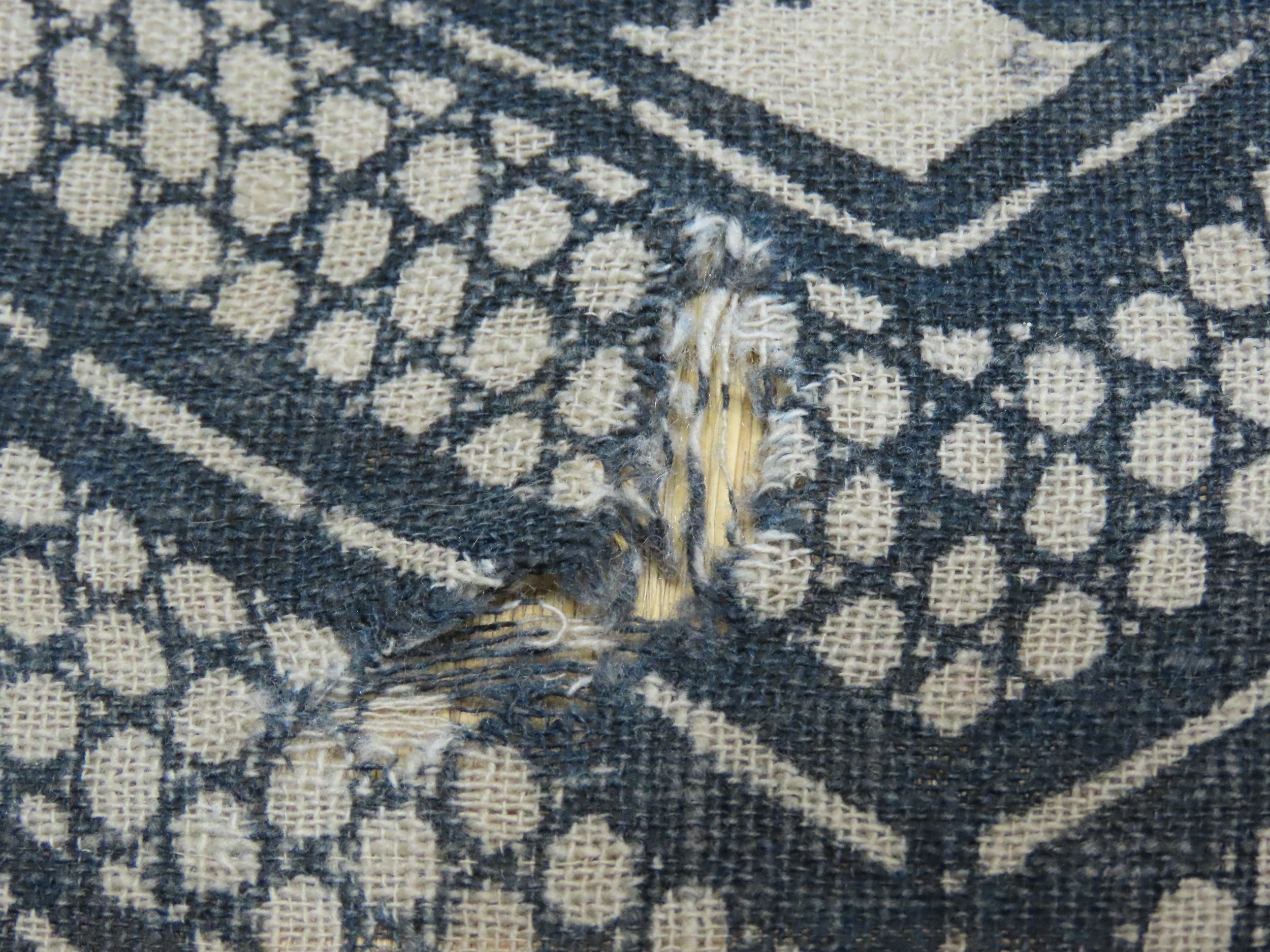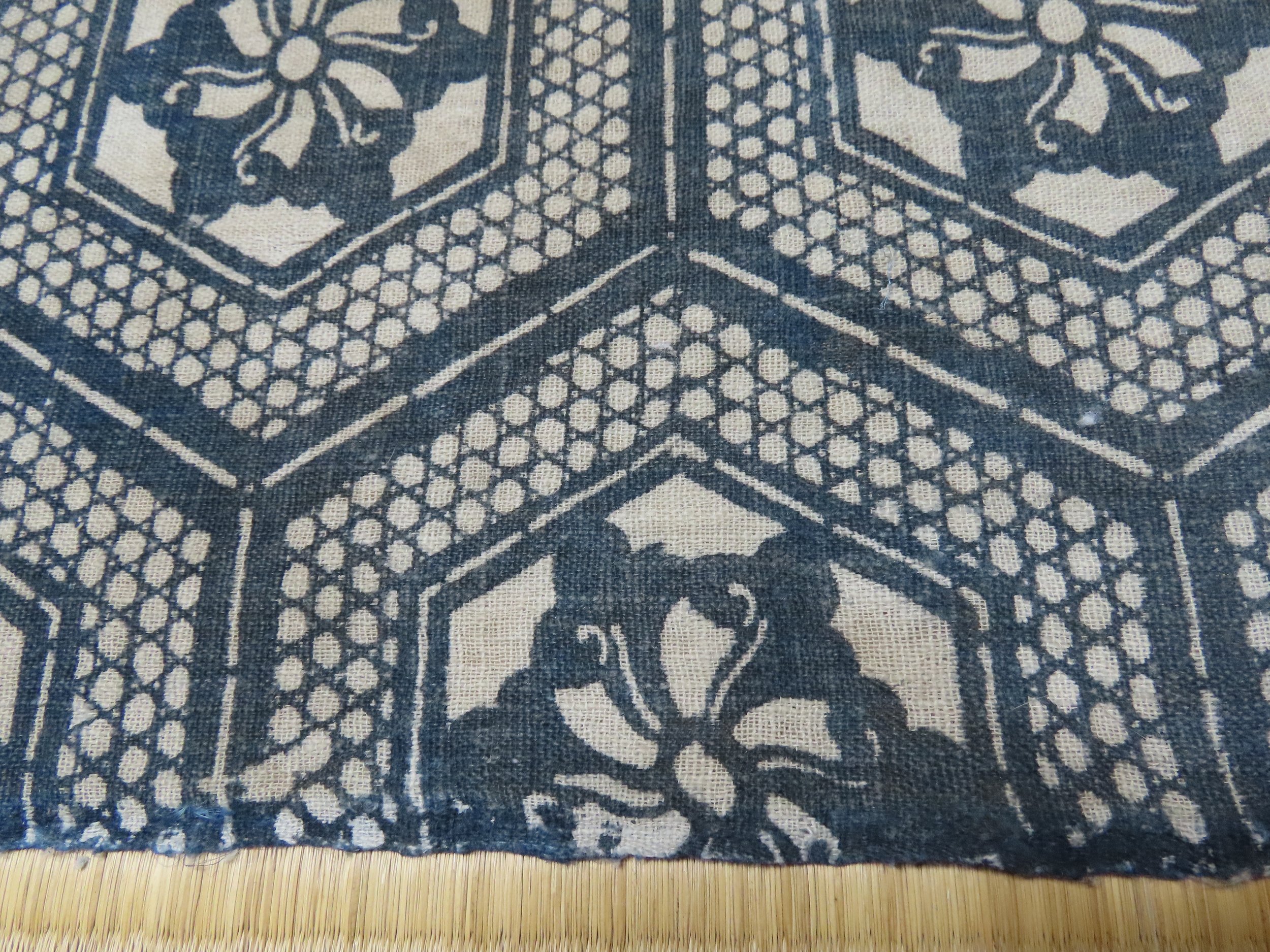 Image 1 of 20
Image 1 of 20

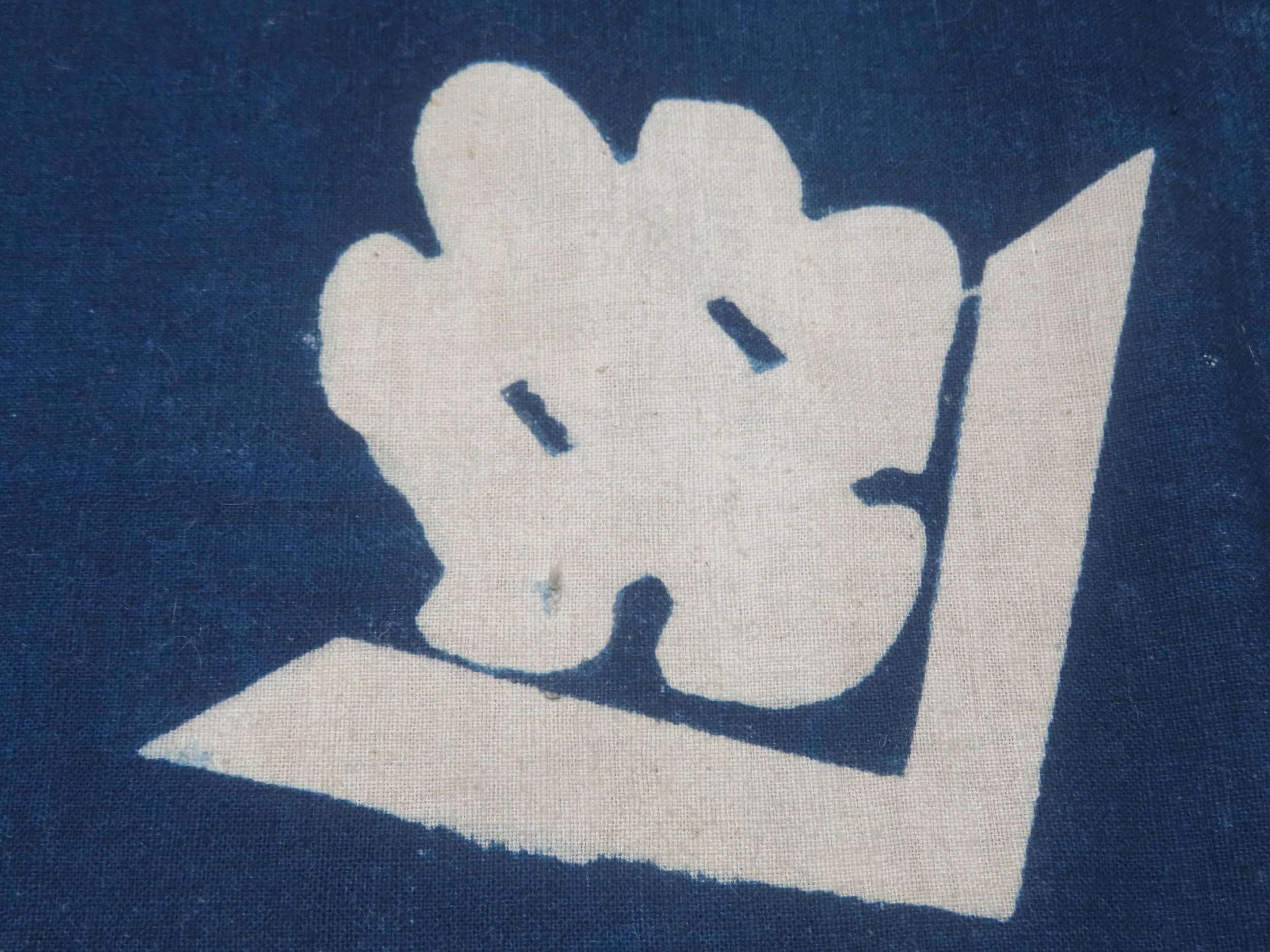 Image 2 of 20
Image 2 of 20

 Image 3 of 20
Image 3 of 20

 Image 4 of 20
Image 4 of 20

 Image 5 of 20
Image 5 of 20

 Image 6 of 20
Image 6 of 20

 Image 7 of 20
Image 7 of 20

 Image 8 of 20
Image 8 of 20

 Image 9 of 20
Image 9 of 20

 Image 10 of 20
Image 10 of 20

 Image 11 of 20
Image 11 of 20

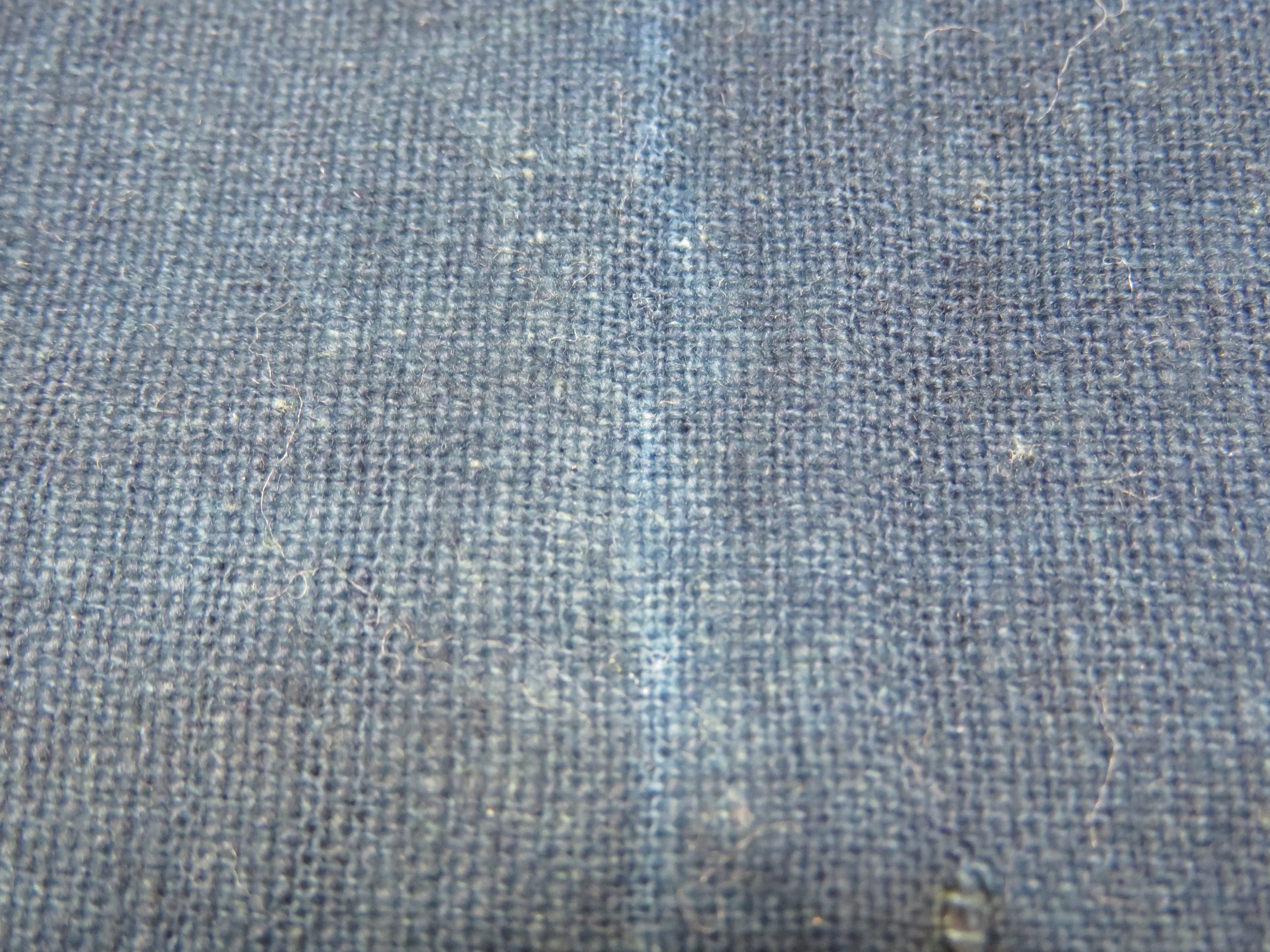 Image 12 of 20
Image 12 of 20

 Image 13 of 20
Image 13 of 20

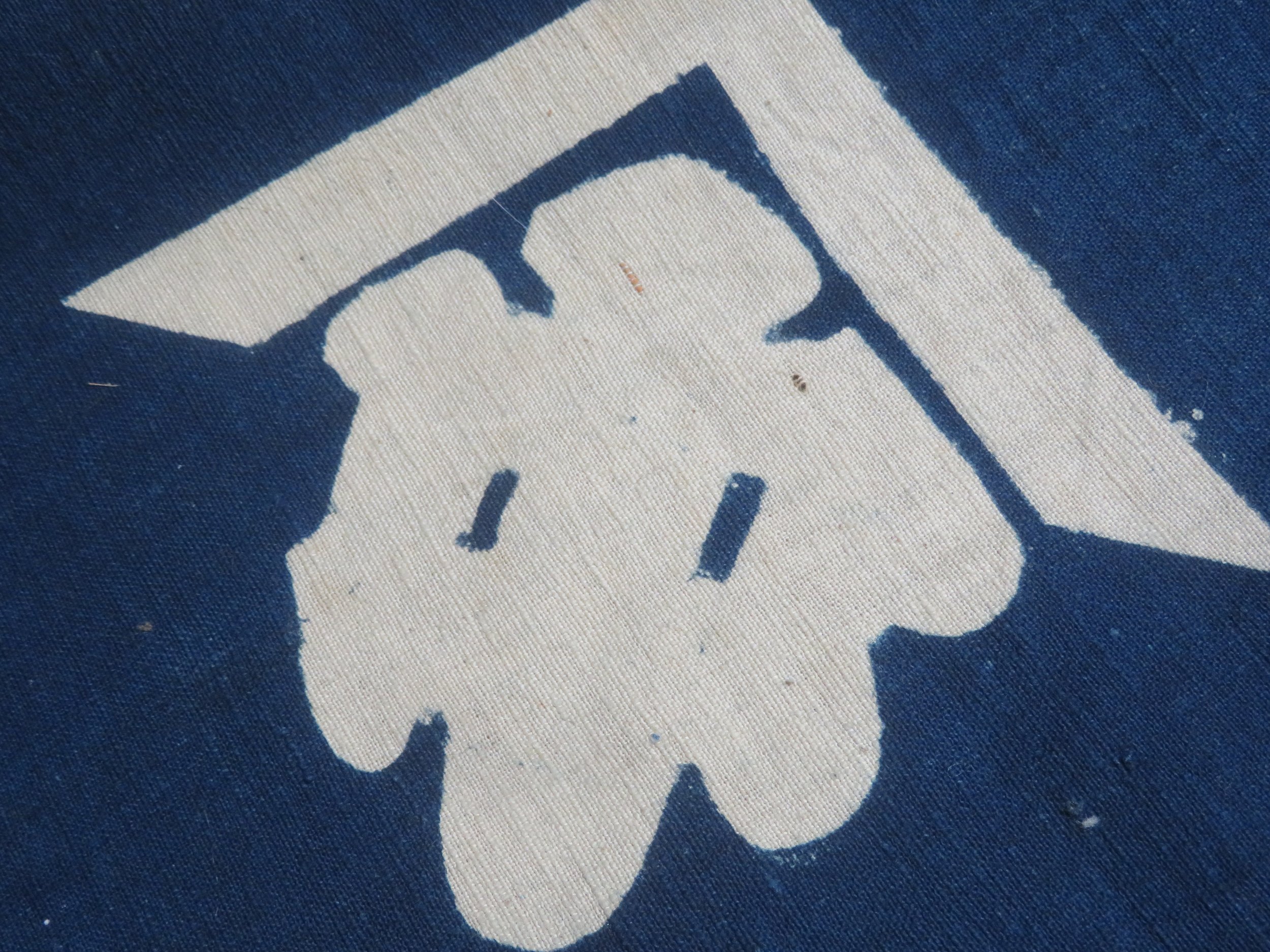 Image 14 of 20
Image 14 of 20

 Image 15 of 20
Image 15 of 20

 Image 16 of 20
Image 16 of 20

 Image 17 of 20
Image 17 of 20

 Image 18 of 20
Image 18 of 20

 Image 19 of 20
Image 19 of 20

 Image 20 of 20
Image 20 of 20





















Antique Cotton Indigo Katazome FABRiC - 180 cms
I am selling this by the half, but if you buy both halves, it will not be cut. : ) Each half is slightly under a yard long, so both halves will be almost two yards long. It would make a super cool scarf, as is!!
This is an old hand-woven, hand-dyed, japanese mingei textile treasure!! It is incredible, the time, energy and experience that went into creating these homespun works of art. Rich medium blue hue. A basic ‘mon’ motif, one style of family name transformed into design, almost like a logo, and often used as such for family run and named businesses of all sorts. It is the character ‘ichi’ or ‘ishi’ and means market, and is often used in family names.
This is a medium weight cotton futon cover fabric. Judging by the thicker fibers and the weave, I would guess this is a nineteenth century textile of the Meiji era. The selvedges are very uneven. Hand woven flavor.
Katazome is a stencil resist dye process. That means a stencil is used to apply a resist, which in this case is nori, a thick paste made from rice. After the resist dries and becomes impenetrable, the fabric is dyed, most often with indigo. The areas where the dried nori is 'resist' the indigo dye, which means they remain white and not dyed under that dry nori shell. That is the meaning of 'resist dyeing', something resists the dye and remains white or undyed.
Some of the antique japanese katazome fabrics have been resist pasted on both sides, and some have just been pasted on just one side. This is a fabric that was pasted on both sides. You can see places where the white design does not perfectly match up on both sides if you hold the fabric up to the light. Also, the edges of some of the white designs are slightly sloppy, like it was difficult to perfectly control applying the sticky nori.
The condition of the fabric is outstanding. There are no holes whatsoever, and the color is deep all over. I see a few tiny specks where nori must hav flicked and that kept a tiny area white. I love when you can see the process of creation in the piece.
There are a ton of things you could do with part or all of this fabric. The first I would recommend highest is buy it all and make a scarf, a boro scarf. I think you could even use it unfinished, as is, depending on your fashion sense. I would. : ) Or you could add a few patches, make it more boro looking with fabrics and stitches.
You could also, of course, chop it into bits for use in smaller projects of all sorts. Collage, scrapbooking, little sewing projects galore!! Or it could be a part of your rainy day fabric stash. Or a gift for a friend?? and on.....I am sure you have even better ideas.
dimensions
altogether 180 cms long x 33.5 cms wide
71 inches x 15 inches
148 grams
Each half will be 35.5 inches, or just under a yard long.
Share this listing and my shop all over the place, Instagram, Facebook, Pinterest, the local corkboard, tell the cat.
I am selling this by the half, but if you buy both halves, it will not be cut. : ) Each half is slightly under a yard long, so both halves will be almost two yards long. It would make a super cool scarf, as is!!
This is an old hand-woven, hand-dyed, japanese mingei textile treasure!! It is incredible, the time, energy and experience that went into creating these homespun works of art. Rich medium blue hue. A basic ‘mon’ motif, one style of family name transformed into design, almost like a logo, and often used as such for family run and named businesses of all sorts. It is the character ‘ichi’ or ‘ishi’ and means market, and is often used in family names.
This is a medium weight cotton futon cover fabric. Judging by the thicker fibers and the weave, I would guess this is a nineteenth century textile of the Meiji era. The selvedges are very uneven. Hand woven flavor.
Katazome is a stencil resist dye process. That means a stencil is used to apply a resist, which in this case is nori, a thick paste made from rice. After the resist dries and becomes impenetrable, the fabric is dyed, most often with indigo. The areas where the dried nori is 'resist' the indigo dye, which means they remain white and not dyed under that dry nori shell. That is the meaning of 'resist dyeing', something resists the dye and remains white or undyed.
Some of the antique japanese katazome fabrics have been resist pasted on both sides, and some have just been pasted on just one side. This is a fabric that was pasted on both sides. You can see places where the white design does not perfectly match up on both sides if you hold the fabric up to the light. Also, the edges of some of the white designs are slightly sloppy, like it was difficult to perfectly control applying the sticky nori.
The condition of the fabric is outstanding. There are no holes whatsoever, and the color is deep all over. I see a few tiny specks where nori must hav flicked and that kept a tiny area white. I love when you can see the process of creation in the piece.
There are a ton of things you could do with part or all of this fabric. The first I would recommend highest is buy it all and make a scarf, a boro scarf. I think you could even use it unfinished, as is, depending on your fashion sense. I would. : ) Or you could add a few patches, make it more boro looking with fabrics and stitches.
You could also, of course, chop it into bits for use in smaller projects of all sorts. Collage, scrapbooking, little sewing projects galore!! Or it could be a part of your rainy day fabric stash. Or a gift for a friend?? and on.....I am sure you have even better ideas.
dimensions
altogether 180 cms long x 33.5 cms wide
71 inches x 15 inches
148 grams
Each half will be 35.5 inches, or just under a yard long.
Share this listing and my shop all over the place, Instagram, Facebook, Pinterest, the local corkboard, tell the cat.





